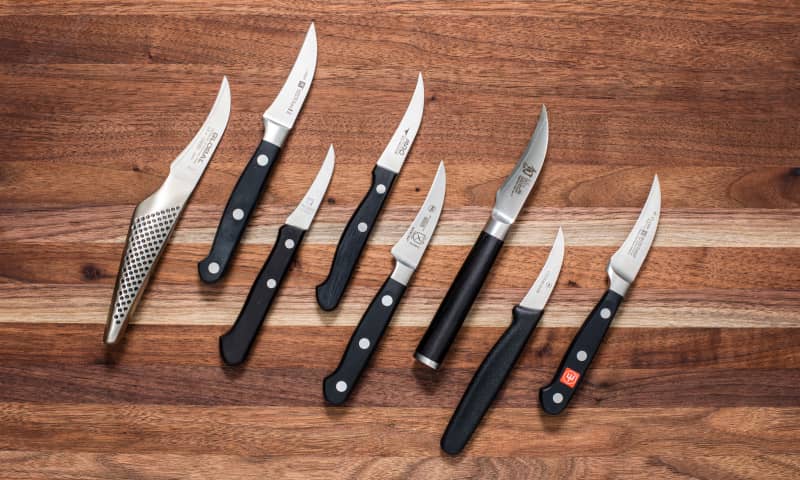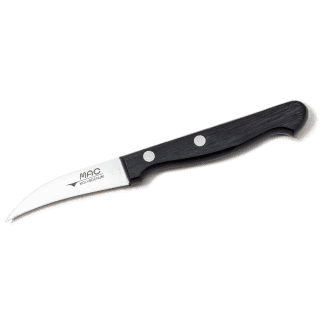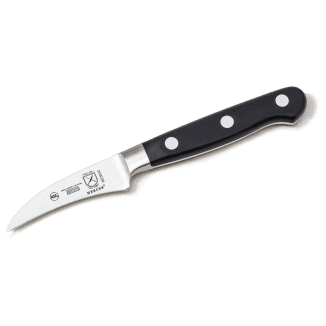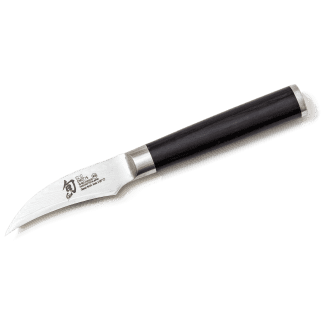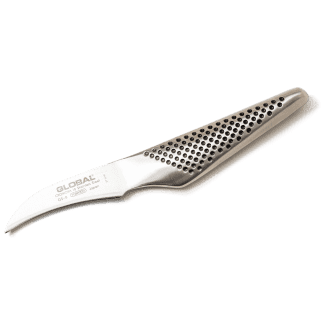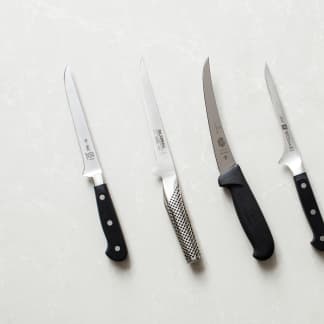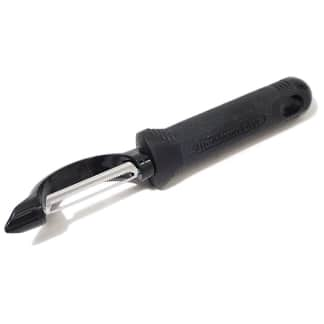Unless you’ve gone to cooking school, there’s a good chance you’ve never heard of a bird’s beak paring knife. A relic of the French culinary system, this knife features a small curved blade shaped like a bird’s beak. Like all paring knives, it is primarily intended for tasks that are done off the cutting board and in your hand. Historically, it was used for making decorative cuts and garnishes that are now rarely seen outside of banquet halls: transforming radishes into florets and tomatoes into roses, fluting mushrooms, and “turning” vegetables into seven-sided barrels—a hallmark of classical French technique. (It is for this last task that these knives are sometimes called tourné knives.)
Today, fans of these knives—many of them former restaurant cooks—use them for two basic types of jobs: peeling fruits and vegetables and precise detail work such as trimming brussels sprouts or removing the eyes from potatoes. We don’t think a bird’s beak paring knife will ever replace a conventional paring knife; these knives are just not as versatile. They aren’t meant to be used on a cutting board and can’t make precise straight cuts as easily; such cuts are important for cutting lime wedges, slicing small blocks of cheese, scoring roasts so the fat cap can render, and cutting pockets in pork chops. But we were curious to see if any of these specialty knives deserve a place in our kitchens, so we bought eight models, priced from about $15 to about $85, and pitted them against our favorite paring knife, the Victorinox Swiss Army Fibrox Pro 3¼″ Spear Point Paring Knife, as we hulled and quartered strawberries, cored and peeled tomatoes, peeled and segmented lemons, removed the eyes from whole peeled pineapples, and peeled ginger.
